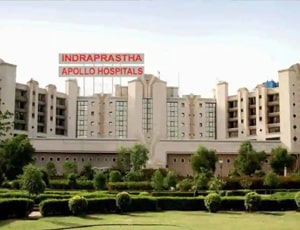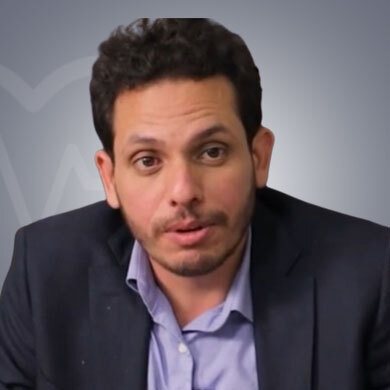Inguinal hernia is a condition that occurs when intestinal tissues or fatty tissues push through the weaker section of the abdominal wall, through the inguinal canals. The inguinal canals are situated both sides of the anterior abdominal wall, on either side of the midline. Located just above the inguinal ligaments, the inguinal canal is larger as well as more prominent among the men compared to women. It serves an important purpose, as it is associated in the conveyance of the spermatic chords in male as well as the uterine ligament (round) in the females. When a part of the abdominal wall gets weak, the tissues in the region protrude through the abdominal wall into the canal, causing extreme pain and discomfort. This can be felt as a lump in the lower abdominal area in most people, however, may also get unnoticed in candidates dealing with obesity. In such cases, inguinal hernia repair becomes the need of the hour, which can be achieved by surgical operations.
Inguinal hernia can be very painful and may interfere with daily activities to a great extent. Though medications like painkillers may help to cope up with the pain, the best treatment to cure hernia is through surgical procedures. Inguinal hernia repair can be done via surgical methods as the opening can not be sealed with medications and therapies, and needs to be thoroughly sealed. Thus, the candidate is suggested and requested to prepare for surgery. However, pre-surgery, through evaluation of the candidate is done in order to diagnose any kind of chronic or terminal disease which shall complicates the surgery further. Inguinal hernia repair is essential as if the protruding tissues are not retracted, it will keep forcing the opening in the abdominal and worsening the condition.
The different approaches to inguinal hernia repair are surgery and laparoscopy. Where the former is referred to an open surgical procedure, the latter is a keyhole surgical procedure which involves minimum invasion. Both the procedures primarily focus on closing the abdominal opening, healing the cause of weakness, and preventing the soft tissues from pushing inside. Unlike the open surgery, laparoscopic surgery ideally helps in inguinal hernia repair by small incisions made in the groin region. This prevents large scarring and also helps in speedy recovery compared to open surgery.
Apart from these, two advanced forms of minimally invasive techniques have been introduced for hernia repair, which are: Transabdominal Preperitoneal or TAPP and Totally Extraperitoneal or TEP. In these methods, instruments are inserted through keyhole incisions. The only difference is that the former involves both abdominal wall and the peritoneal region, whereas the latter does not include peritoneal region.
Before beginning with the surgical procedure, local anesthesia, or general anesthesia will be provided to the candidate which ensures that no pain is felt during the operation. In some cases, regional anesthesia to the spine may also be preferred.
Henceforth, an incision measuring 6 cm to 8 cm is made in the affected region, the positioning of which is monitored via ultrasound done prior to operation.
With the help of necessary instruments, the protruding tissues are pushed back to its place out of the opening in the abdominal wall.
The opening or the weakened portion of the abdominal wall is thereby sealed with the help of a mesh covering the area.
Post-operation, the incision is sealed with stitches.
In case of progressive hernia detected after extended damage, the surgeon may also need to remove the affected portions and stitch the ends of the healthy bowel together in order to maintain normal functioning.
The recovery period required after an inguinal hernia repair varies according to the type of procedure performed. In case of laparoscopic surgery, the candidate shall be able to return to restricted activities within one or two weeks utmost.
However, in case of open surgical procedure, the candidate shall be needing a recovery period of three weeks before returning to regular activities.

Istanbul, Turkey
Founded in 1999, Medicana Camlica is a specialty hospital of the Medicana Group which is well known ...more
![]() Private Rooms
Private Rooms
![]() Translator
Translator
![]() Nursery / Nanny Services
Nursery / Nanny Services
![]() Airport Pick up
Airport Pick up

Delhi, India
Equipped with more than 50 specialty institutes, Indraprastha Apollo was started with the vision of ...more
![]() Private Rooms
Private Rooms
![]() Translator
Translator
![]() Nursery / Nanny Services
Nursery / Nanny Services
![]() Airport Pick up
Airport Pick up

Marrakesh, Morocco
History Clinique Internationale Marrakech is opened to provide world-class medical services to the ...more
![]() Accommodation
Accommodation
![]() Airport Transfer
Airport Transfer
![]() Choice of Meals
Choice of Meals
![]() SIM
SIM

General Laparoscopic Surgeon
Hyderabad, India
5 of experience
USD 30 for video consultation

General Surgeon
Ghaziabad, India
15 Years of experience
USD 32 for video consultation

General & Laparoscopic Surgeon
Delhi, India
25 Years of experience
USD 45 for video consultation

General Laparoscopic Surgeon
Cairo, Egypt
10 of experience
USD 50 for video consultation